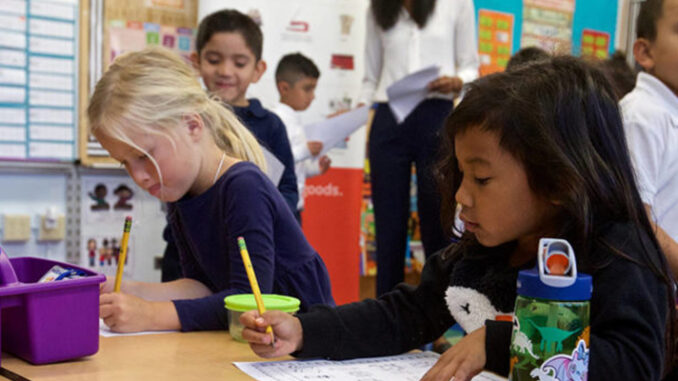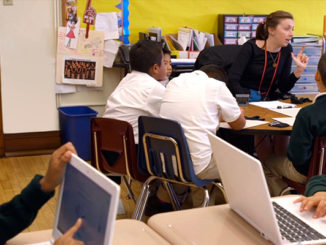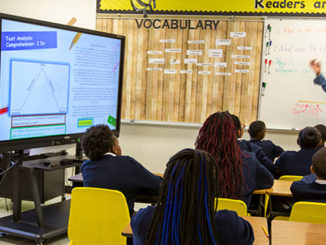
The factory model of American education cannot cure the ills reformers continually tell us more funding will address. But amid this education crisis, new, entrepreneurial and most importantly, self-directed approaches to learning offer promising paths forward.
By the end of May, a majority of American K-12 schools were at least partially open for face-to-face instruction, with every indication that come fall, schools everywhere would be “back to normal.” This long-awaited shift comes after almost 18 months of teachers’ unions and school districts placing their exaggerated perception of risk ahead of the well being and education of students. California, as usual, led the way in intransigence, with the L.A. Unified School District teachers’ union demanding a wide array of policy changes before they would agree to reopen. The situation in Los Angeles was replicated in miniature across the nation—and many schools ended their year only partially returned to a normal schedule.
In the wake of the pandemic, K-12 education is ready not just for reform but revolution. Rather than tinkering around the edges of existing institutions in hopes of providing marginally better learning experiences, legislators ought to radically challenge teachers’ unions through the expansion of school choice and voucher programs to create real competition. But beyond this, ordinary Americans ought to seize the moment to reimagine what they want their children’s education to look like.
To take the most dramatic example, parents could opt their children out of institutional schools altogether in favor of homeschooling. During the pandemic, the proportion of American families homeschooling at least one child (as opposed to supervising remote instruction delivered by a school) more than doubled, from 5.4 percent of households with school-aged children to 11.1 percent. As the Home School Legal Defense Association points out, this represents at least the same number of actual students as are enrolled in the nation’s many private schools, and perhaps more, since many families homeschool more than one student.
While we applaud homeschooling in principle (and, indeed, homeschool our own three children), we recognize that for a variety of reasons, it may not be an option for the majority of American families. Practically speaking, at least part of the value of institutional schooling lies simply in the fact that their children are safe and supervised while parents are working. With inflation on the rise, parents find their wages having less and less purchasing power, so that seems unlikely to change. And because of the stranglehold that age-leveled, community-based public schooling has on American education, sending children to spend their days in school was a default choice, almost a non-decision, for nearly 90 percent of parents before the pandemic.
But this formerly easy choice is not the one that best cultivates the minds and hearts of our children. Public school is meant to educate citizens and make them competent members of society. By almost every metric, it has failed at this for decades. Less than a quarter of 8th graders passed as “proficient” in civics over the last two decades, and the overemphasis on testing almost certainly worsens the situation. Conventional American schooling is not built to foster curiosity. If anything, the opposite is true. The system incentivizes rote learning and the sort of resume-building that will get students into college, but does not prepare them for the active pursuit of knowledge. We are told that school is vital for social development and happiness, but if the pre-COVID depression and anxiety rates in public school students are any indication, this claim is dubious at best.
The factory model of American education cannot cure the ills reformers continually tell us more funding will address. But amid this education crisis, new, entrepreneurial and most importantly, self-directed approaches to learning offer promising paths forward.
Why, for example, should we have students attend a school for more than six hours a day, 180 days a year, as is typical in the United States? Ordinary public school districts in places like Noblesville, Indiana, and larger public school-based networks like that created by Propel America offer high school seniors extensive training and internship opportunities two or three days a week. These opportunities do not need to be tethered to conventional schools, or limited to high school students.
“University model” schools where pupils attend between one and four days a week, often with shorter in-class schedules, proliferated around the country before the pandemic. Many schools operating on this model explicitly frame education as a partnership with parents, asking that they take an active role in building activities at home and in the community for their children. The largely Arizona-based Prenda Microschools allow groups of 5-10 students to meet in family homes. The model allows students to set their own goals and manage the time it takes to achieve them. Around the country, a wide variety of “democratic” schools and co-ops allow students to design their own educational paths with adults serving as guides and mentors rather than didactic instructors. These forms of schooling prize flexibility and family choice, and can encourage participation by other community members.
The benefits of such an approach are many. In an era of increased standardization and high-stakes testing, reducing the number of days spent in school would allow parents and children to enjoy the freedom to tailor at least part of their educational experiences and alleviate some of the psychological burdens associated with institutional schooling. If the circumstances and interests of the children and host institution allowed, perhaps such settings might also result in entrepreneurial, practical learning of the type modeled by the student-run businesses at the heart of Embark Education in Denver.
A reimagined schedule would allow districts with overcrowded classrooms to more comfortably accommodate a greater number of students in their existing physical spaces while providing smaller teacher-student ratios in class.
There would be costs, of course. Unpopular as it might be, one source of funding could be the budgets of public schools themselves, or a tax rebate or voucher that parents could use to cover any fees associated with the non-school program of their choice—exactly the sort of political action legislatures could undertake to support parental choice and encourage student flourishing.
Teachers’ unions and school districts will undoubtedly argue that funding students instead of institutions represents nothing less than an attack on students, teachers and even the American way of life. But after the pandemic, should any of us believe them?
As we look ahead to life after COVID-19, we hope that parents will pause and ask whether sending their children “back to school” is really their best option.
Sarah A. Morgan Smith is the former Director of Faculty at the Ashbrook Center at Ashland University. Brian A. Smith is the Managing Editor of Law & Liberty.



